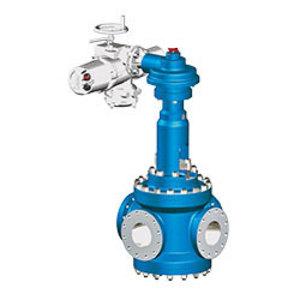Control Seal high performance triple offset butterfly valve capable of closing with zero leakage. The precision seat and seal are machined at an offset angle creating even seat loading around the entire seat ring and eliminating rubbing between the seat and seal during opening and throttling. This design provides repeatable long-lasting zero leakage shut-off.
TYPICAL APPLICATIONS
LNG
Mol-Sieve
Process fluids
Hydrocarbons
Stem / geothermal steam
Hot gas / sour gas (NACE)
Oxygen / hydrogen
Blow down
Sulphur recovery
Acid / caustic / chloride
Abrasive service
Control Seal has a UNIQUE DESIGN OF ITS PRODUCTS, SHORT LEAD TIME, COMPETITIVE PRICING AND EXCELLENT AFER-SALES SUPPORT.
Control Seal is SOLUTION ORIENTED and the valves are designed to meet exact process conditions - PROJECT by PROJECT. Our valves operate where competing valves fail.
Actuators
Pneumatic
Electric motor
Hydraulic
Manual gear
|
Valve Design |
API 6D, ASME B16.34 |
|
Industry Standards |
ASME B16.34, ANSI FCI 70-2, API 609, API 607, API 598 |
|
Face to Face dimensions |
API 6D |
|
Flanges |
ASME B16.5 |
|
Testing |
API 598, API6D, ISO 5208 |
|
Topworks |
ISO 5210 |
The principle of operation incorporated in the Control Seal triple offset valve is geometry in motion. Both the seat in the body and the seal on the disc are surfaces of a cone which is sectioned at an angle. The valve shaft is located slightly to one side of the seat center and above the plane of the seat. Its center of rotation is also somewhat offset from the axis of the imaginary cone which extends from the surface of the seat.
When the valve is closed, the surface of the seal and the seat are in full contact at all points. Any efforts to try to further close the disc (rotating it into the seat) increases the sealing force and tightens the valve. This allows the valve to achieve a bi-directional seal.
Opening the valve, or rotation the disc away from its seat, results in the seal moving away from the seat at all points, elimination rubbing or sliding of the seating surfaces, thus avoiding wear.
Control Seal valves feature true non-rubbing seating surfaces for long life and tight shutoff.



